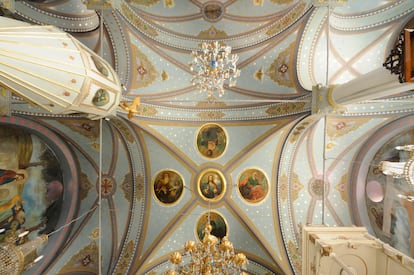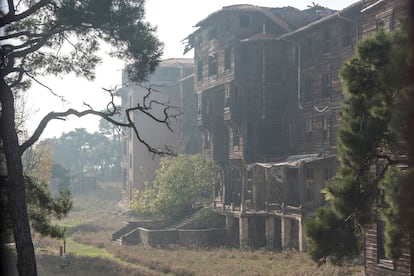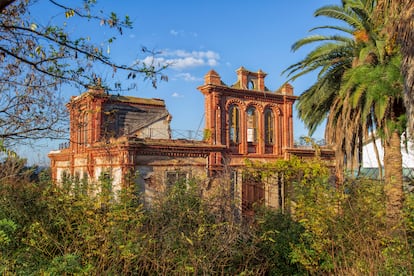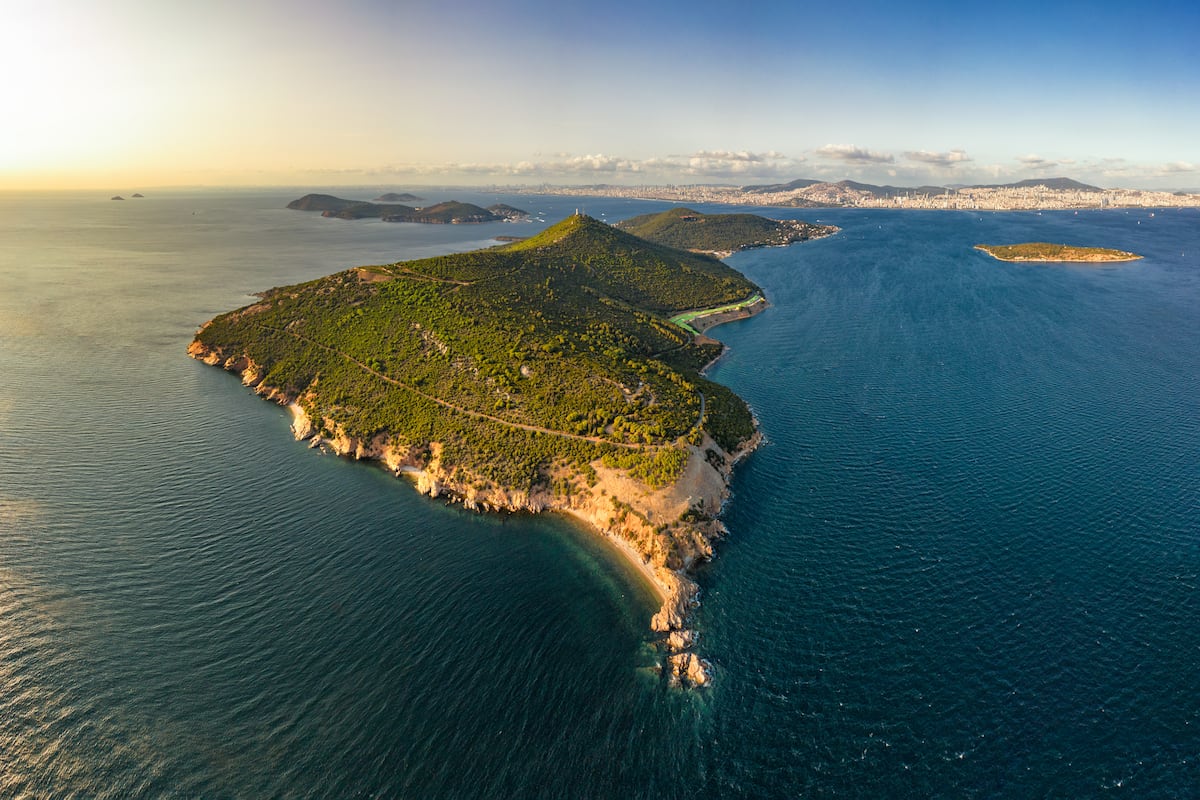Büyükada: An oasis filled with beaches and history in the heart of Istanbul
The ferry doors open onto the main street of the small island of Büyükada. An enclave in the Sea of Marmara – and a neighborhood in Istanbul’s Adalar district – Büyükada boasts beaches with crystal-clear waters in various shades of blue. There are no motorized vehicles in sight: only pedestrians and cyclists move between cafés and small shops. The street is adorned with leafy trees, Turkish flags and portraits of Kemal Atatürk, the founder and first president of the Republic of Turkey.
The island acts as an oasis in Turkey’s cultural capital because even though it shares the historical richness of central Istanbul and is just under 18 miles from the Hagia Sophia – an iconic mosque visited by more than six million people each year – it remains untouched by the tourist chaos. Here, families stroll peacefully and young people enjoy a day at the beach, escaping the hustle and bustle of the city’s incessant traffic.
Visiting Büyükada is like stepping back in time. During the Ottoman Empire (1299-1922), the island was a destination for sultans and aristocrats. But after the fall of the Ottoman Empire and the establishment of the Turkish Republic, the island was opened up to the general public. As you wander through its streets, vestiges of this era emerge in the imposing wooden mansions. Some remain abandoned, while others have been converted into private homes or hotels. The island’s ancient landscape is complemented by the sea and the modern skyline of Istanbul’s Asian side.
During your walking tour of the small island, you’ll see the cats – ever-present throughout Turkey – resting under the shade of the trees, well-fed by residents and visitors. Their presence reflects the country’s Muslim faith, which values these animals for their cleanliness and the deep respect that the Prophet Muhammad had for them.
One of Büyükada’s most iconic landmarks is the Greek Orthodox monastery Aya Yorgi, perched atop the island’s highest hill. Built in the 18th century, it has become one of Turkey’s main Christian pilgrimage destinations. The climb can be made on foot or by taking a small electric bus that drops visitors off just under half-a-mile from the summit. Although it’s a short journey, the steep incline can be challenging. Both the bus and ferry are paid for with the Istanbulkart – a prepaid, reusable card – which allows access to all public transportation in Istanbul. It costs 130 Turkish lira, equivalent to $3.30 at the current exchange rate, and can be topped up to a maximum of 300 lira ($7.64).

During the climb to the monastery, it’s common to see pilgrims walking barefoot, in silence, or tying colorful ribbons to the trees as part of their rituals. The view from the top while resting on the rocks in the shade of the trees is worth the effort. The landscape is absolutely scenic, with the blue sea nearby and a small white lighthouse atop the mountain. There’s also a view of the most modern buildings of the immense city: Istanbul is a hub between Europe and Asia, with more than 15 million inhabitants.
There are no cars on Büyükada. Only a few golf carts, electric scooters, or the aforementioned bus to reach Aya Yorgi are available. The most comfortable and common way to get around is on foot, although renting a bicycle can also be an excellent option… so long as you’re prepared to tackle the inclines. Keep in mind that, when approaching the monastery, it’s impossible to follow the path by pedalling. Hence, you’ll have to lock your bike somewhere, or drag it to the top.
A must-see due to the uniqueness of the building is the Prinkipo Greek Orthodox Orphanage (“Rum Yetimhanesi” in Turkish). Locals bill it as “the second-largest wooden building in Europe.” And, although there’s no official list to corroborate this, the structure is striking. Abandoned for half-a-century and damaged by a fire in the 1980s, the building is part of Istanbul’s cultural and architectural heritage. The structure retains a sinister appearance, which could be the perfect setting for a horror film. However, this may change in the future: since 2024, efforts have been underway to restore the building and return it to its useful life.

Another key historical site on this small island is the former residence of Leon Trotsky, one of the most influential leaders of the Russian Revolution. After being exiled in 1929, he chose Büyükada as his first refuge. Although you can no longer enter the 38,750-square-foot mansion, visitors can still look at it from the outside. Local historians say that this was the place where Trotksy wrote his autobiography – My Life (1930) – while hiding from assassins sent by dictator Josef Stalin, who led the Soviet Union for 30 years.
A day trip can easily extend into the night. Accommodation isn’t a problem: there are plenty of hotels to choose from, although prices are higher than in the rest of Istanbul. During low season, the cheapest price for a room is €70 a night, or $80 at the current exchange rate.

The island is brimming with restaurants and cafes and it is the perfect place to sample the local cuisine. Here, you can try a Turkish breakfast, which is an experience in and of itself. You don’t have to decide whether you want sweet or savory, as it’s usually a mix of both. This breakfast consists of filling the table with a variety of small dishes, enjoyed alongside freshly-baked bread. Common dishes include eggs, black and green olives, a selection of cheeses, cured meats, homemade jams, honey, as well as fresh vegetables such as cucumber and tomato. All of this food is accompanied by tea, Turkish coffee, or fresh juices. Another typical dish is menemen, which is scrambled eggs with tomato, pepper, onion and spices.
Among the notable establishments on Büyükada is a retro-style soda shop, Sevda Gazozcusu, which offers more than 100 different flavors. Among them, the fruity ones – such as mandarin, pineapple and pomegranate (the national fruit) – predominate. These drinks are the perfect complement to an aimless stroll through the island’s maze of streets, far from the stratospheric prices and TikTok-driven crowds of Istanbul proper.
Sign up for our weekly newsletter to get more English-language news coverage from EL PAÍS USA Edition



